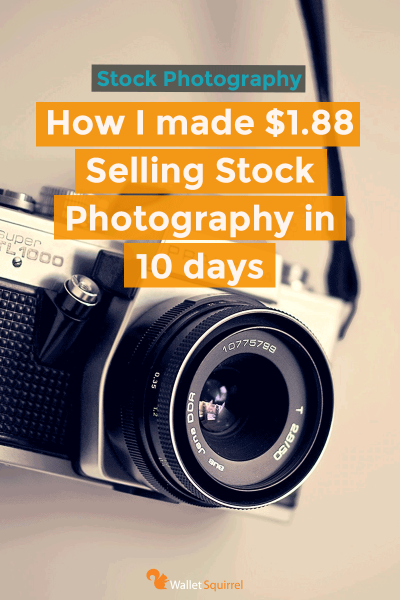If you’re a musician or composer looking to monetize your music, Shutterstock Music might be a platform worth exploring. It offers a straightforward way for artists to reach a global audience by licensing their tracks for various projects like videos, commercials, and online content. But how exactly does Shutterstock Music work behind the scenes? Well, at its core, it’s built on a revenue-sharing model where artists earn money based on how often their tracks are licensed. Think of it as a marketplace connecting creators who need music with talented artists ready to supply it. Whether you’re new to licensing or a seasoned pro, understanding this revenue model can help you make smarter decisions about your music career.
How Shutterstock Music Artists Generate Income
So, you’re wondering, “How do artists actually make money on Shutterstock Music?” It’s pretty simple but also depends on several factors. First, every time someone licenses one of your tracks—that is, pays to use it—you earn a royalty. The amount you receive per license isn’t fixed; it varies based on the type of license purchased and your contributor status. Shutterstock offers different licensing options, such as standard and enhanced licenses, which can influence your earnings.
Here’s a quick breakdown of how income is generated:
- Per-Track Licensing Fees: When a customer downloads your song, they pay a fee based on the license type. You get a percentage of this fee.
- Download Volume: The more your music is downloaded, the more you earn. Popular tracks can generate significant income over time.
- Subscription vs. On-Demand Sales: Shutterstock offers both subscription plans and one-time purchases. Earnings per license can differ between these models.
Shutterstock also provides valuable analytics, so you can see which tracks are performing best and tailor your future compositions accordingly. Additionally, you earn royalties on a recurring basis—monthly, typically—so your income can grow as your catalog gains popularity. Some artists even combine Shutterstock licensing with other platforms to maximize their earnings. Overall, consistent quality uploads and understanding what buyers are looking for can help you boost your income significantly.
Factors Influencing Earnings Per Track
When it comes to how much a music artist can earn per track on Shutterstock, there are quite a few factors at play. It’s not just about uploading a song and watching the dollars roll in. The platform considers several elements that can boost or limit your earnings. Let’s break down some of the key factors:
Quality of the Track
First impressions matter. Shutterstock favors high-quality, professionally produced music. Tracks with clear sound, good mixing, and mastering tend to perform better. A polished track is more likely to be chosen by buyers, which can lead to higher sales and royalties.
Genre and Popularity
Some genres tend to sell more than others. For example, background music for videos, corporate tracks, or trending genres like ambient or chillhop often see higher demand. Staying current with what buyers are looking for can make a difference in your earnings.
Track Length and Structure
Longer tracks or those with multiple sections can sometimes generate more revenue, especially if they’re licensed for longer or more extensive use. However, it’s important to balance length with quality—don’t add filler just to increase duration.
License Types and Usage
Shutterstock offers different licensing options—standard and extended licenses. Extended licenses typically bring in higher royalties because they cover more extensive uses. Understanding which license your track is associated with can influence your earnings.
Upload Consistency and Portfolio Size
Artists who upload regularly and maintain a sizable portfolio tend to earn more over time. The more tracks you have available, the higher the chances of one hitting a popular niche or trending demand, boosting your overall earnings.
Promotion and Visibility
Getting your tracks noticed is crucial. Use relevant keywords, tags, and descriptions to improve search visibility. The more exposure your tracks get, the better your chances of making sales, which directly affects your earnings per track.
Average Earnings for Shutterstock Music Artists
Wondering how much you can expect to earn per track on Shutterstock? Well, it varies quite a bit, but having a ballpark figure can help set your expectations. On average, music artists earn between $20 to $50 per track in royalties, but this range isn’t set in stone. Several factors can push your earnings higher or lower.
For artists just starting out, initial earnings might be on the lower side—say, around $10 to $20 per track—especially if your portfolio is small or your tracks are new. As you build your library, improve your production quality, and optimize your metadata, your earnings can increase.
Experienced artists with a well-curated portfolio and trending tracks can earn upwards of $100 or more per track. Some top creators consistently generate significant income, especially if their music is versatile and frequently licensed for commercial projects, films, or advertising.
| Experience Level | Typical Earnings Per Track |
|---|---|
| Beginner | $10 – $20 |
| Intermediate | $20 – $50 |
| Experienced/Top Sellers | $50 – $150+ |
Keep in mind, these figures are estimates and can fluctuate based on market trends, licensing deals, and how effectively you market your music. The key takeaway? Consistency, quality, and understanding your audience can significantly influence your earnings per track on Shutterstock.
Tips to Maximize Your Income as a Shutterstock Music Artist
Looking to boost your earnings as a Shutterstock music artist? You’re in the right place! Making the most out of your tracks involves a mix of strategic choices and consistent effort. Here are some practical tips to help you maximize your income:
1. Create High-Quality, Versatile Tracks
Quality is king. Focus on producing professional, well-mixed tracks that can fit a variety of projects. Versatility is key—think about creating different genres or moods. This way, your music appeals to a broader audience, increasing the chances of your tracks being downloaded and used.
2. Stay Current with Trends
Keep an eye on emerging trends in media and advertising. For instance, upbeat tunes for social media ads or calm, relaxing music for wellness videos. When your tracks align with what’s popular, they’re more likely to be in demand, boosting your earnings.
3. Optimize Your Metadata
Use accurate and descriptive titles, tags, and descriptions. This helps your tracks show up in relevant searches. Think about the keywords clients might use to find music like yours. The better your metadata, the higher the visibility—and more downloads!
4. Upload Consistently
Regular uploads keep your portfolio fresh and increase your chances of being noticed. The more tracks you submit, the higher the likelihood that clients will find something they love. Consistency also builds your reputation as a reliable contributor.
5. Engage with the Shutterstock Community
Participate in forums, webinars, or social media groups related to Shutterstock. Networking can lead to valuable insights, collaborations, and even direct feedback. Plus, it keeps you motivated and inspired to improve your craft.
6. Price Your Tracks Strategically
Understand Shutterstock’s payout structure and consider how your pricing impacts your earnings. While you can’t set individual prices, creating a diverse portfolio with a mix of popular and niche tracks can help balance your income streams.
7. Promote Your Music Outside Shutterstock
Share your tracks on your personal website, social media, or music platforms. While Shutterstock handles licensing, building your brand can lead to additional opportunities, collaborations, and a loyal audience that supports your work.
Conclusion and Final Thoughts on Music Artist Earnings
Understanding how Shutterstock compensates its music artists can seem complex at first, but with the right approach, you can turn it into a rewarding venture. Remember, your earnings are influenced by multiple factors—quality, relevance, metadata, and consistency all play vital roles.
Most importantly, stay patient and persistent. Building a successful music portfolio takes time, but each high-quality track you upload brings you closer to greater earnings. Keep refining your craft, staying connected with industry trends, and exploring new ways to promote your work.
Whether you’re just starting out or looking to increase your existing income, the key is to focus on creating music that resonates with clients and fits a variety of projects. Over time, your dedication can lead to a steady stream of income and even open doors to new creative opportunities. Happy composing!


